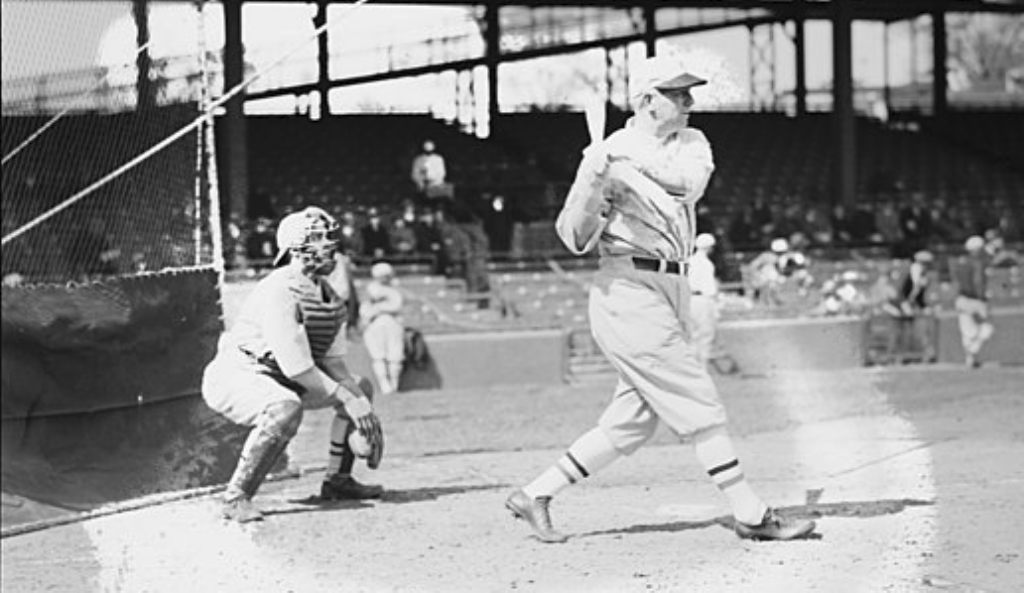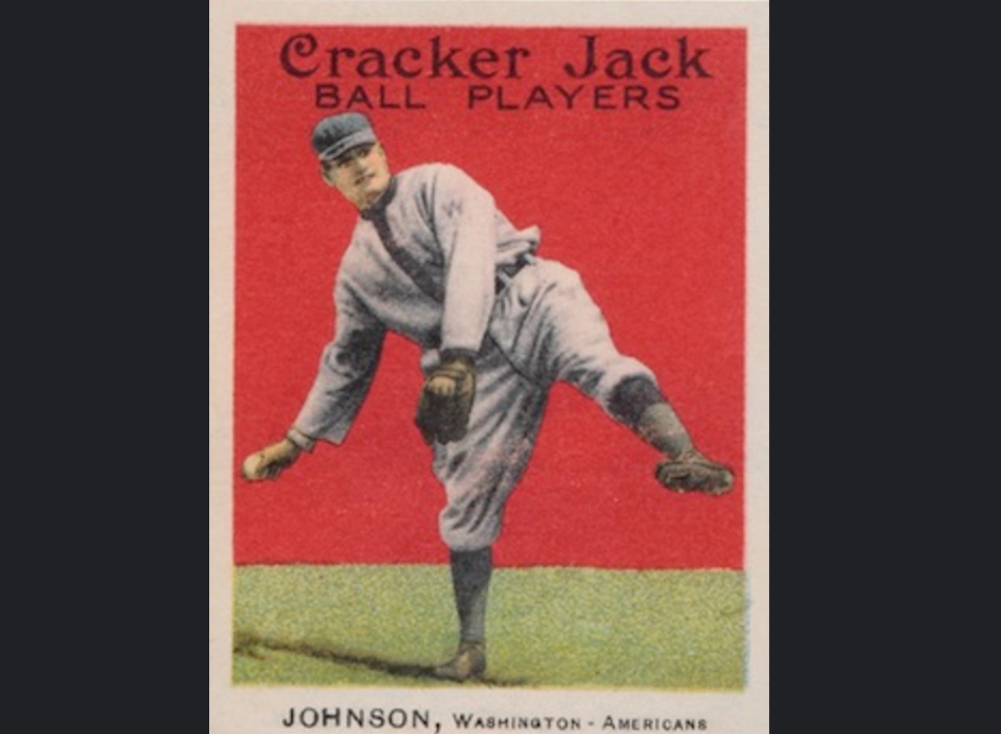Jerry West
Mark Howe
Jack Adams
Baseball's First Celebrity, Crowned in Crimson and White
His journey began in the silk mills of Paterson, New Jersey, where Kelly discovered his love for the game. His raw talent soon took him to the professional ranks, landing him a spot with the Cincinnati Red Stockings in 1878. From the very beginning, Kelly stood out. His dazzling defense at third base and his potent bat quickly earned him the nickname "Prince," later morphing into the regal "King."
But Kelly wasn't content with mere excellence. He craved spectacle, constantly pushing the boundaries of the game. He invented the hit-and-run before it was officially recognized, stole bases with reckless abandon (leading the league five times), and even coined the term "hook slide" after perfecting the maneuver himself. He captivated audiences with his chatter on the field, engaging in playful banter with fans and opponents alike.
His on-field exploits were equally impressive. A two-time batting champion, Kelly amassed impressive stats, hitting .388 in his peak year (1886) and racking up over 2,500 career hits. He led his teams, including the Chicago White Stockings and the Boston Beaneaters, to eight pennants in his 16-year career, proving his prowess beyond his theatrical charm.
Yet, Kelly's life wasn't without its shadows. He battled gambling debts, struggled with alcoholism, and was suspended in 1891 for allegedly fixing a game (charges later disputed). Despite these controversies, his fans remained loyal, drawn to his undeniable charisma and his unparalleled talent.
Tragically, King Kelly's reign ended abruptly in 1894 at the age of 36. He succumbed to pneumonia, leaving behind a legacy that transcended wins and losses. He had redefined the role of the baseball player, transforming it from a simple athlete into a performer, a showman, and a captivating king of the diamond.
Even today, over a century after his last swing, King Kelly's legend lives on. His name graces the Baseball Hall of Fame, his spirit echoes in the flamboyant plays of modern stars, and his legacy as baseball's first celebrity reminds us that the game is as much about the showmanship as it is about the score.
Hockey Giant, Builder, and Champion
Playing Prowess:
-Six Stanley Cup rings: As a player, Patrick hoisted the coveted trophy with Victoria (1912, 1925) and Montreal (1916, 1917, 1924). His defensive brilliance and leadership were undeniable.
-Scoring touch: Though known for his defense, Patrick wasn't shy about
offense. He twice led the PCHA in scoring and amassed over 300 career goals.
Building Legacies:
-PCHA co-founder: Along with his brother Frank, Patrick helped establish the Pacific Coast Hockey Association in 1911, laying the groundwork for future expansion and ultimately contributing to the NHL's formation.
-Rule innovator: Patrick pioneered significant rule changes like numbered jerseys, player changes "on the fly," and penalty shots, forever impacting the game's flow and fairness.
Coaching & Management:
-Two more Stanley Cups: Patrick transitioned seamlessly to coaching, guiding the New York Rangers to their first championships in 1933 and 1940. His tactical acumen and player management skills were highly respected.
-Executive vision: As general manager, Patrick built contender teams for both Victoria and New York, showcasing his talent for identifying and nurturing talent.
Legacy Lives On:
-Hall of Fame member: Inducted in 1947, Patrick's place among hockey's elite is undisputed.
-The Lester Patrick Trophy: Awarded annually to individuals who have made outstanding contributions to the sport in the United States, this trophy further cements his lasting impact.
King of the Canadiens, Master of the Game
Moore's rise began not with flashy goals but with relentless hustle. A tireless worker, he honed his craft on Montreal's rinks, earning a call-up to the Canadiens in 1951. Initially overshadowed by giants like Maurice and Henri Richard, Moore found his niche as a tenacious checker with a pinpoint shot. He battled for pucks in corners, disrupted opponent's plays, and supported his illustrious linemates.
But Moore was no mere sidekick. He possessed a scoring touch as keen as his blade. In 1957-58, he shattered Gordie Howe's record for points in a regular season, netting 41 goals and 55 assists. He twice won the Art Ross Trophy for leading the league in scoring, and his name became synonymous with the Canadiens' offensive prowess during their dynasty years.
Moore wasn't just a scorer but a magician with the puck. His stickhandling, described as "poetry on ice," could weave through defenders like a slalom skier between gates. He possessed that rare instinct for the game, anticipating passes, sniffing out scoring opportunities, and leaving opponents flailing in his wake.
He wasn't without his share of challenges. A broken wrist nearly cut short his championship campaign, and an off-ice tragedy threatened to derail his career. Yet, Moore persevered, returning to the ice with a steely resolve that cemented his place among the Canadiens' immortals.
Moore donned the Maple Leaf for his final years, proving his brilliance wasn't limited to Montreal. He retired in 1968, leaving a legacy as one of the game's most complete players. Moore was more than just goals and trophies; he embodied the Canadiens' spirit - a tireless worker, a fearless competitor, and a game master.
Today, Dickie Moore's name sits alongside Montreal's hockey pantheon. His jerseys hang from the rafters, a testament to his contributions to the Canadiens' glory. But his legacy extends far beyond Montreal. He is a reminder that hard work, unwavering passion, and a touch of magic can turn an ordinary boy from the frozen streets into a king of the ice.
Louis Santop A Big Man Behind the Plate
Though statistics remain incomplete, his dominance is undeniable. He averaged over .350 and smashed monstrous homers. His career stretched across various teams, culminating in four stellar years with the Hilldale Daisies. While towering over the competition at 6'4", Santop wasn't just muscle. He was a skilled leader, named the All-Star catcher five times, and earned a better-than-average salary for his draw.
His legend extends beyond statistics. He faced down fireballs from Smoky Joe Williams and Cannonball Redding, broke Oscar Charleston's ribs in a fiery altercation, and even held his own against the legendary Josh Gibson as far as hitting the long ball. He was a box office sensation, mesmerizing fans with his power and grace.
Though denied the opportunity to shine in the segregated significant leagues, Santop's impact on Black baseball is undeniable. He paved the way for future stars, proving the incredible talent unjustly hidden from mainstream audiences. In 2006, his legacy was finally recognized with his induction into the Baseball Hall of Fame.
Fern Flaman Hockey HOF Defenseman
In Boston, Flaman's arrival in 1944 heralded the dawn of a defensive fortress. His rugged play, characterized by aggressive body checks and a knack for reading the ice like a book, earned him the respect of teammates and the fear of opponents. He anchored the Bruins' blue line for seven seasons, helping them secure two Stanley Cup appearances. He became a fan favorite, his name echoing through the hallowed halls of the Boston Garden.
Then, in a twist of fate worthy of a hockey epic, Flaman found himself traded to the Toronto Maple Leafs in 1950. Donning the white and green, he found himself amidst a dynasty-in-the-making. His defensive prowess seamlessly integrated into the Leafs' powerful machine, and his unwavering determination fueled their championship drive. In 1951, he lifted the Stanley Cup with his former rivals, a poignant feat that solidified his place in hockey history.
But the duality of Flaman's career didn't end there. Traded back to the Bruins in 1954, he embraced his return with the spirit of a warrior returning home. He captained the team for five seasons, leading them to another Stanley Cup appearance in 1957. His loyalty to both Bruins and Leafs wasn't questioned; it was simply understood. He served each team with the same fiery passion, etching his name in the hearts of fans on both sides of the rivalry.
Flaman's legacy transcends mere statistics. He was a pioneer of the "stay-at-home" defenseman, paving the way for generations of blue-liners who prioritized protecting their net over flashy offensive forays. He was a leader, both vocal and by example, inspiring his teammates to push their limits and never back down. He was a symbol of the NHL's golden age, a time when rivalries were fierce but respect between players remained untarnished.
From Parkdale Pond to Hockey Valhalla
Smith's early days were spent honing his talent on the makeshift rink of Toronto's Parkdale neighborhood. His puckhandling, a mesmerizing blend of speed and precision, earned him a place on the junior Parkdale Canoe Club and, soon, the senior Toronto Granites. By 1924, he was gracing the Olympic ice, scoring 18 goals and helping Canada capture gold.
Professional glory awaited. Drafted by the Ottawa Senators, Smith's offensive prowess and fiery spirit electrified the league. He terrorized opponents with his unpredictable rushes, racking up 200 goals in his career and earning a reputation as one of the most feared scorers of his era.
But Hooley wasn't just a goal machine; he was a maestro of the stick fight, his short temper legendary. His 1927 brawl with Boston's Harry Oliver, sparked by a dirty cross-check, led to a month-long suspension and cemented his "bad boy" image. Yet, even his on-ice brawls couldn't diminish his talent.
Smith found a home in Montreal with the Maroons, where he captained the "S Line," a trio of offensive juggernauts feared throughout the NHL. He led them to a Stanley Cup victory in 1935, hoisting the trophy with a characteristically mischievous grin.
His career spanned four teams and 17 seasons, each marked by flashes of brilliance and the occasional fiery outburst. He retired in 1941, leaving behind a legacy as one of his era's most electrifying and controversial players.
Hooley Smith wasn't just a hockey player; he was a character, a rogue prince who defied expectations and carved his path to greatness. His story reminds us that sometimes, the most captivating players aren't just the ones with the most trophies but those who dance on the edge of chaos, captivating us with brilliance and audacity.
The Old Poisonous Goal Machine
His career saw him don the jerseys of the Montreal Maroons, Boston Bruins, and New York Americans, leaving a trail of goals wherever he went. He led the league in scoring once, in 1926, and even boasted the NHL's fastest two-goal record (four seconds apart!) for decades.
But Stewart's legacy transcended mere statistics. He was a cerebral player, mastering the art of deception. His stickhandling was legendary, leaving defenders grasping at air as he wove through the ice like a phantom. Though not the hardest, his slap shot was pinpoint accurate, finding the net with uncanny precision.
He wasn't afraid to get rough, earning penalties with regularity. But even his temper served him well, fueling his intensity and drive. This duality earned him the nickname "Old Poison," a testament to his potent mix of skill and bite.
Stewart's crowning achievement came in 1937 when he surpassed Howie Morenz as the NHL's all-time leading scorer. This record stood for 15 years, a testament to his longevity and consistency. He even won the prestigious Hart Trophy twice, solidifying his status as one of the game's early greats.
While injuries and age eventually slowed him down, Stewart's impact on hockey's history is undeniable. He pioneered offensive creativity, was a relentless competitor, and was a legend loved for his unorthodox brilliance. So, the next time you see a skilled player weave through defenders and bury a well-placed shot, remember "Old Poison," who proved that finesse and fury could be a potent cocktail on the ice.












